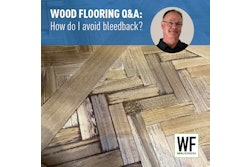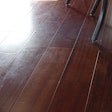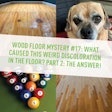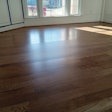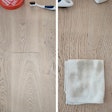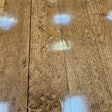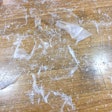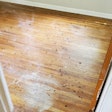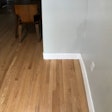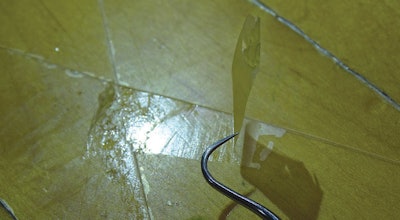
The Homeowner’s Issue
The homeowners called a wood floor contractor to provide an opinion on whether their site-finished floor needed a recoat or complete refinish. The contractor said the floor was in fair condition and could be recoated; he recommended two coats of finish for better protection. About 14 months after the recoat, the floor began to chip and peel, and the owners contacted the contractor, who stated that prior to the recoat the owners must have used some unapproved floor cleaner or sweeping/dusting aids. The owners said they only used the floor cleaner provided at the time of the original finishing. The contractor then contacted a certified wood floor inspector.
Roy: The Inspector’s Observations
An inspection revealed the finish had peeled in several locations. I performed an ASTM D3359 adhesion test using Method A, in which a cross-cut is made through the film to the substrate (wood). Pressure-sensitive tape is then applied over the cut and removed, and adhesion is assessed qualitatively on a scale of zero to 5. While performing the adhesion test on this floor, the finish began to chip and peel during the cutting process. Using a dental tool, I could lift the edge of the finish film and see the film come off in sheets—a clear indication of finish adhesion failure.
Blake: The Attorney’s Analysis
This situation is unique compared with prior columns because we do not have a retailer or manufacturer involved, and the legal situation is straightforward: The contractor is responsible. He was hired to recoat the floor, and the coating he applied failed.The contractor can make excuses about the customer having used the wrong cleaner, but even if that were true, the contractor would still be on the hook. If using the wrong floor cleaner could have such a large impact on whether the new coating failed, then he should have investigated that prior to applying the new coating.
There are only three ways I can see the contractor possibly avoiding responsibility:
1) He can show that the coating product itself was defective and caused the failure (there’s no evidence of that here).
2) He can show he followed all manufacturer and industry standard guidelines and his customer agreement states he is not liable under those circumstances.
3) His contract limited his warranty to one year. In that case, the contractor can argue the warranty has expired. However, even if the contract did limit the warranty period, in most states the customers would have at least two years to pursue negligence and/or breach of contract claims separate from a warranty claim. I often say that in a construction defect case, the customer has three pucks (warranty, negligence and breach of contract), and only one needs to get in the net.
Unless the contractor can pull one of these rabbits out of his hat, there is no magic here—the contractor is responsible.

















